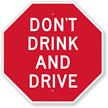Why we’re less likely to die in car wrecks today
Fewer people are dying in car crashes, Vox recently reported, and some of the reasons behind this positive trend are surprising. First, the facts: Since the 1970s, fatalities from traffic accidents have decreased 40 percent. Deaths have been on a steady decline after peaking in 1969 at 55,043. By 2012, the figure stood at 33,561, according to National Highway Traffic Safety Administration data published last fall.

Car wrecks are less frequent and less fatal than they used to be. From Ricky Norris.
The reasons for the dip in deaths are varied. For one, drunk driving is on a major decline. NHTSA information reveals that the rate of drunk driving deaths — which topped 20,000 in the early 1980s — has declined by about half as of 2010. While there is no data available for drunk driving deaths prior to the early 1980s, a push in the 1980s to change the legal drinking age from 18 to 21 in most states may have exerted a positive impact.
Another safety factor: Buckling up! While Vox reports that the three point safety belt was included in cars for the first time in 1959, most states did not have laws on the books requiring people to use them. New York was the first state to pass a law requiring people to use them (and that didn’t happen until 1984); today, all states, with the exception of New Hampshire, require seat belt use. Throughout the country, seat belt use averages at 86 percent, according to 2012 figures.
Americans have been driving less — though American drivers have been clocking more miles on the road, since 2005, they’ve been traveling approximately 7 percent fewer miles per person; and, as Vox points out, “fewer miles means fewer crashes.” For young people, driving is becoming less and less appealing; baby boomers are aging, and driving less. Plus, drivers of all ages have been forced to cut back on motoring around as oil prices have risen.
Advancing technology has also helped lessen the number of car crash fatalities. While anti-lock brakes first appeared in American cars in the 1970s, contrary to common belief that feature does not improve safety. As NHTSA reports, anti-lock brakes have yielded “a zero net effect on fatal crash involvements.”
Yet since 2011, American cars have also been outfitted with electronic stability control, “which detects skidding and then applies the brakes to individual wheels to stop the slide.” The combination of anti-lock brakes and electronic stability control have reduced fatal wrecks by 15 percent in cars, and 27 percent in light trucks and vans.
Another safety evolution, the airbag, has improved safety over the years. Introduced in 1988 by Chrysler, airbags have proven to be — on the whole, though with some exceptions — a life-saving feature. Cars equipped with air bags reduce driver deaths by approximately 11 percent; in nearside crashes or rollover accidents, curtain and side airbags reduce deaths from 8 to 42 percent.
Despite these significant advancements, there are many ways to improve driver, passenger and pedestrian safety, including improving roads; more thorough anti- drunk driving measures; and innovative technology, such as self-driving cars and rear-view cameras.
Category: Automotive, Traffic law

















